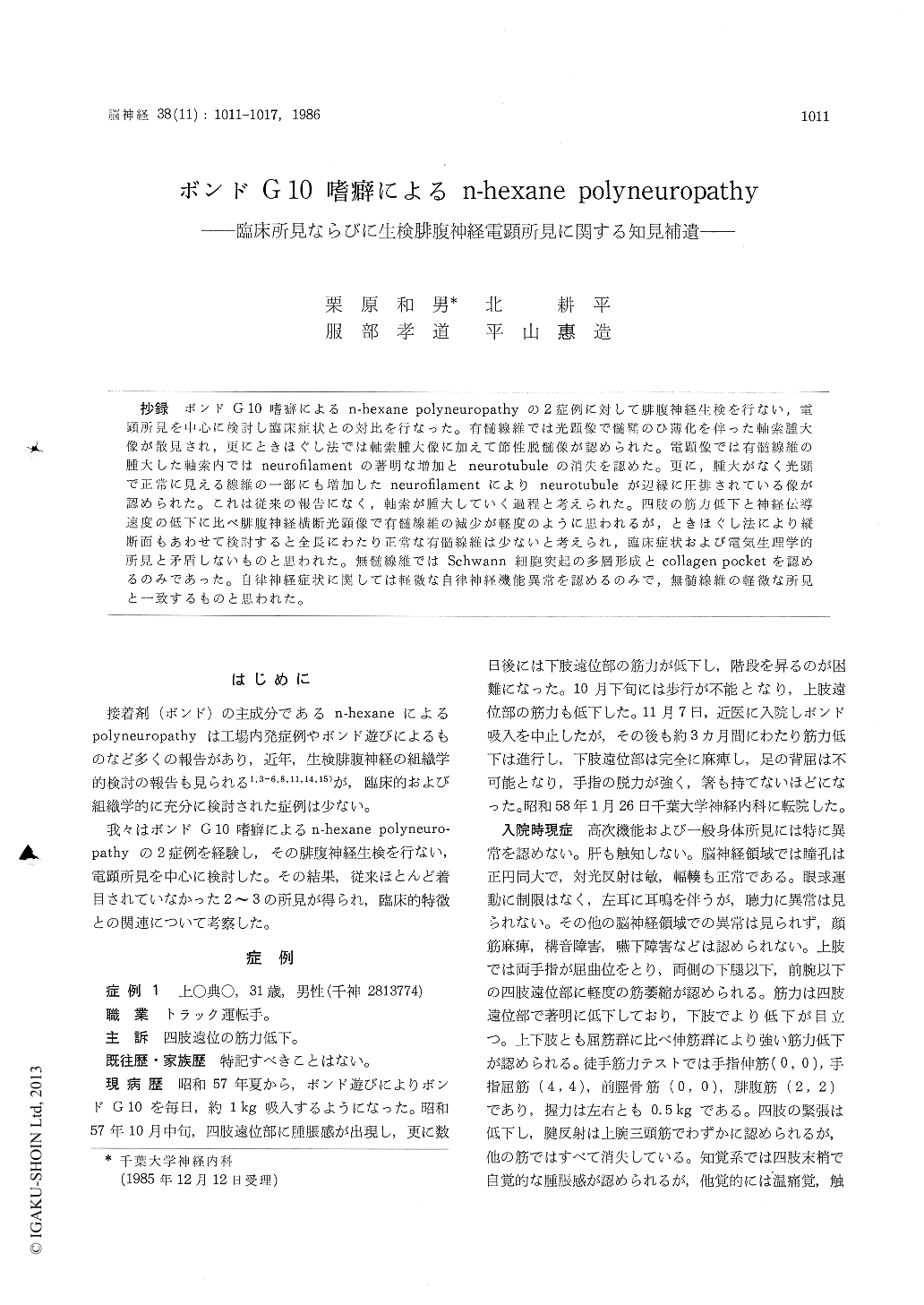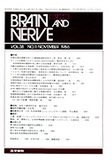Japanese
English
- 有料閲覧
- Abstract 文献概要
- 1ページ目 Look Inside
抄録 ボンドG10嗜癖によるn-hexane polyneuropathyの2症例に対して腓腹神経生検を行ない,電顕所見を中心に検討し臨床症状との対比を行なった。有髄線維では光顕像で髄鞘のひ薄化を伴った軸索腫大像が散見され,更にときほぐし法では軸索腫大像に加えて節性脱髄像が認あられた。電顕像では有髄線維の腫大した軸索内ではneurofilamentの著明な増加とneurotubuleの消失を認めた。更に,腫大がなく光顕で正常に見える線維の一部にも増加したneurofilamentによりneurotubuleが辺縁に圧排されている像が認められた。これは従来の報告になく,軸索が腫大していく過程と考えられた。四肢の筋力低下と神経伝導速度の低下に比べ腓腹神経横断光顕像で有髄線維の減少が軽度のように思われるが,ときほぐし法により縦断面もあわせて検討すると全長にわたり正常な有髄線維は少ないと考えられ,臨床症状および電気生理学的所見と矛盾しないものと思われた。無髄線維ではSchwann細胞突起の多層形成とcollagen pocketを認めるのみであった。自律神経症状に関しては軽微な自律神経機能異常を認めるのみで,無髄線維の軽微な所見と一致するものと思われた。
Two cases of n-hexane polyneuropathy due to glue sniffing were reported and the clinical fea-tures, laboratory data and sural nerve biopsy findings were discussed. Case 1 was a 31-year-old man and case 2 was a 24-year-old man. Both of them developed motor dominant polyneuropathy subacutely after inhalating Bond G 10 for about 3 months. Their weakness deteriorated further for about 3 months even after discontinuing Bond G10 inhalation and they became almost confined to wheel chairs. Thereafter, however, they started to recover fairly rapidly. Gas chromatographic analysis of Bond G10 revealed that it contains 47.7% of n-hexane and 21.8% of toluen.
Almost all reported cases of glue sniffer's neuropathy were motor dominant type, but those of n-hexane polyneuropathy of factory workers were sensory or sensorimotor neuropathy. There-fore our cases are thought to be typical of glue sniffer's neuropathies.
Sural nerve biopsies were done in both patients, and examinations of photomicroscope, teased method and electronmicroscope were performed. From our photomicroscopic examinations we found only mild changes such as reduction of num-ber of myelinated fibers, and from our electron-microscopic examinations we noted marked accu-mulation of neurofilaments and loss of neurotubu-les in swelled axons.
Some axons were normal in appearance by photomicroscopic examination, but the same axons under electronmicroscopic examination further revealed that neurotubles were oppressed by accumulation of neurofilaments to the margin of an axon. These findings seem to indicate the pathological processes of axonal swellings.
As to the autonomic nervous system, there were no abnormal findings except for low temperature (28℃) of distal parts of four extremities measured by thermography and value of R-R interval in both cases and some sudomotor abnormalities in case 2. Electronmicroscopic examination of un-myelinated fibers showed subtle changes such as lamella formation of Schwann cell process and collagen pocket.
Although changes in photomicroscopic examina-tion were mild, rather severe axonal degeneration in electronmicroscopic findings and teased method could explain clinical features such as severe motor weakness and slowed nerve conduction studies.

Copyright © 1986, Igaku-Shoin Ltd. All rights reserved.


